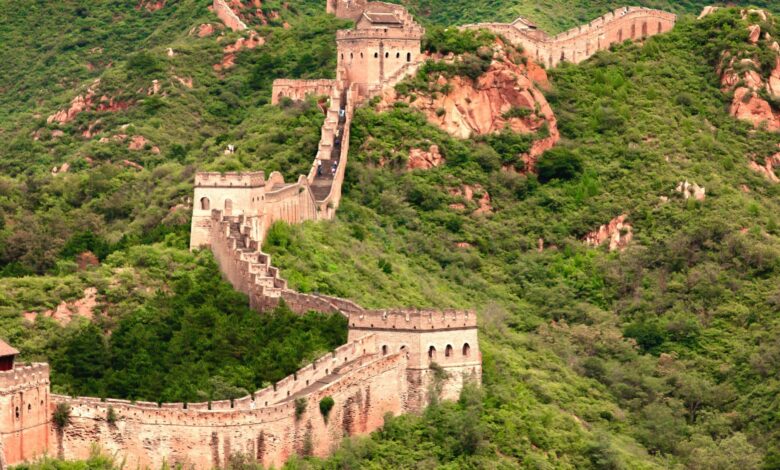Unlock China’s Secrets: The Rising Power You Can’t Ignore

Introduction to China
China, officially known as the People’s Republic of China (PRC), is a country located in East Asia. It is the world’s most populous country, with a population of over 1.44 billion people, and the second-largest economy in the world. China has a rich history dating back over 4,000 years, with a complex and diverse culture that has been shaped by its long history, geography, and traditions. In this article, we will delve into the history, culture, economy, and politics of China, providing a comprehensive overview of this fascinating country.
History of China
China has a long and complex history, with the first Chinese dynasty, the Xia Dynasty, dating back to around 2100 BCE. The Qin Dynasty, which ruled from 221 to 206 BCE, is famous for its terracotta army and the construction of the Great Wall of China. The Han Dynasty, which ruled from 206 BCE to 220 CE, is considered one of the greatest periods in Chinese history, with significant advances in science, technology, and the arts. The Tang Dynasty, which ruled from 618 to 907 CE, is often referred to as the “Golden Age” of Chinese history, with a flourishing of poetry, art, and culture.
China was also home to several other notable dynasties, including the Ming and Qing Dynasties, which ruled from 1368 to 1644 CE and 1644 to 1912 CE, respectively. The Qing Dynasty was the last imperial dynasty in China, and its collapse in 1912 marked the beginning of the Republic of China. In 1949, the Communist Party of China (CPC) came to power, and the People’s Republic of China was established.
Culture of China
Chinese culture is one of the oldest and most complex in the world, with a rich heritage of traditions, customs, and values. Confucianism, Taoism, and Buddhism are the three main philosophical and religious traditions in China, and have had a profound impact on Chinese thought and behavior. Chinese culture is also known for its vibrant arts scene, with a long history of poetry, painting, calligraphy, and music.
Chinese cuisine is also famous around the world, with popular dishes such as Peking duck, Xiaolongbao, and hot pot. Chinese festivals, such as the Chinese New Year and the Mid-Autumn Festival, are also an important part of Chinese culture, with traditional foods, decorations, and activities.
- Confucianism: a philosophical and ethical system that emphasizes personal and governmental morality, correctness of social relationships, justice, and sincerity.
- Taoism: a philosophical and religious tradition that emphasizes living in harmony with the natural world and finding balance and simplicity in life.
- Buddhism: a religious tradition that originated in India and emphasizes the attainment of enlightenment and the end of suffering through meditation and mindfulness.
Economy of China
China has experienced rapid economic growth over the past few decades, with its GDP growing from $191 billion in 1980 to over $14 trillion in 2020. China is now the second-largest economy in the world, after the United States, and is a major player in global trade and finance. China’s economy is driven by a combination of state-owned enterprises, private businesses, and foreign investment, with a strong focus on manufacturing, technology, and innovation.
China is also a major player in global trade, with a large trade surplus and a significant role in international organizations such as the World Trade Organization (WTO) and the Asian Infrastructure Investment Bank (AIIB). China’s economic growth has also led to significant improvements in living standards, with a growing middle class and increasing access to education, healthcare, and other social services.
- State-owned enterprises: large companies owned and controlled by the Chinese government, which play a significant role in strategic industries such as energy, finance, and telecommunications.
- Private businesses: small and medium-sized enterprises that are owned and operated by private individuals or companies, which play a significant role in driving innovation and entrepreneurship in China.
- Foreign investment: investment by foreign companies and individuals in China, which has played a significant role in driving economic growth and modernization in China.
Politics of China
China is a one-party state, with the Communist Party of China (CPC) holding power since 1949. The CPC is a Marxist-Leninist party that is committed to socialism and the principles of communism, but has also implemented significant economic reforms and opened up to the outside world. China’s political system is characterized by a strong centralized government, with a powerful president and a complex system of governance that includes the State Council, the National People’s Congress, and the Chinese People’s Political Consultative Conference.
China’s politics are also influenced by its unique system of governance, which includes the concept of “socialism with Chinese characteristics.” This system emphasizes the importance of economic development, social stability, and national unity, while also allowing for a degree of flexibility and experimentation in governance and policy-making.
- Communist Party of China: the ruling party of China, which has been in power since 1949 and is committed to socialism and the principles of communism.
- State Council: the chief administrative authority in China, which is responsible for implementing national policies and overseeing the work of government ministries and agencies.
- National People’s Congress: the highest organ of state power in China, which is responsible for electing the president and premier, as well as approving national laws and policies.
Geography and Climate of China
China is a vast and geographically diverse country, with a range of different landscapes and climates. China’s terrain includes mountains, forests, deserts, and coastal plains, with the Himalayan Mountains forming the country’s southwestern border. China’s climate is also varied, with tropical and subtropical regions in the south, and temperate and cold climates in the north.
China is also home to a number of major rivers, including the Yangtze River, the Yellow River, and the Pearl River, which play a significant role in the country’s economy and environment. China’s coastline is also long and complex, with a number of major ports and shipping lanes that are important for international trade.
- Mountains: China is home to a number of major mountain ranges, including the Himalayas, the Tian Shan, and the Qinling Mountains.
- Forests: China has a significant amount of forest cover, with many different types of trees and ecosystems, including tropical rainforests, temperate forests, and boreal forests.
- Deserts: China is home to a number of major deserts, including the Gobi Desert and the Taklamakan Desert, which are important for their natural resources and unique ecosystems.
Education and Research in China
Education is highly valued in Chinese culture, and China has a well-developed education system that includes primary, secondary, and tertiary education. China is also home to a number of world-class universities and research institutions, including Tsinghua University and Peking University, which are known for their academic excellence and innovative research.
China is also a major player in scientific research and innovation, with a strong focus on fields such as technology, engineering, and mathematics (STEM). China’s government has also implemented a number of initiatives to promote innovation and entrepreneurship, including the “Made in China 2025” plan, which aims to upgrade China’s manufacturing capabilities and promote the development of high-tech industries.
- Primary education: compulsory education for children aged 6-12, which includes a range of subjects such as Chinese, mathematics, science, and social studies.
- Secondary education: education for students aged 13-18, which includes a range of subjects such as Chinese, mathematics, science, and social studies, as well as vocational training and technical education.
- Tertiary education: higher education for students aged 18 and above, which includes a range of subjects such as arts, humanities, social sciences, and natural sciences, as well as professional training and graduate studies.
Challenges and Opportunities in China
Despite its many achievements, China also faces a number of challenges and opportunities, including environmental degradation, social inequality, and economic uncertainty. China’s rapid economic growth has also led to significant environmental problems, including air and water pollution, and the country is working to address these issues through a range of initiatives, including the development of renewable energy and the implementation of stricter environmental regulations.
China is also working to address social inequality, which is a significant challenge in the country. China’s economic growth has created a large and growing middle class, but it has also led to significant income inequality, with many people in rural areas and urban centers struggling to make ends meet. China’s government has implemented a number of initiatives to address these issues, including the development of social welfare programs and the implementation of policies to promote economic development in rural areas.
- Environmental degradation: China’s rapid economic growth has led to significant environmental problems, including air and water pollution, and the country is working to address these issues through a range of initiatives.
- Social inequality: China’s economic growth has created a large and growing middle class, but it has also led to significant income inequality, with many people in rural areas and urban centers struggling to make ends meet.
- Economic uncertainty: China’s economy is facing a number of challenges, including a slowdown in economic growth, a decline in exports, and a significant increase in debt, which are creating uncertainty and volatility in the country’s economy.
Conclusion
In conclusion, China is a complex and fascinating country, with a rich history, culture, and economy. China’s unique blend of traditional and modern elements, its stunning natural beauty, and its vibrant cities make it a popular destination for tourists and business travelers alike. China’s government and people are working to address the country’s challenges and opportunities, and the country is likely to continue to play a major role in global affairs in the years to come.
Whether you are interested in history, culture, economy, or politics, China has something to offer. From the Great Wall of China to the vibrant cities of Shanghai and Beijing, China is a country that is full of surprises and contradictions. As China continues to evolve and grow, it is likely to remain an important and fascinating country for many years to come.









